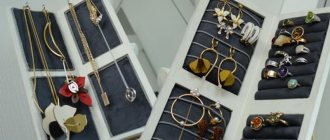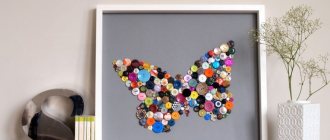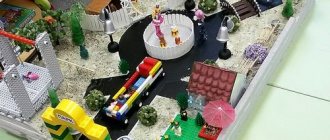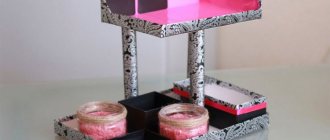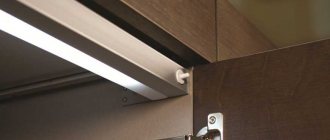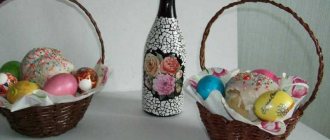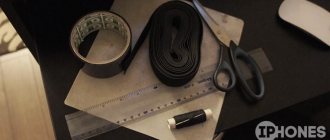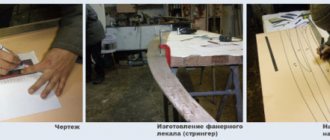Using things made with your own hands is always doubly pleasant. Especially if this thing is made taking into account individual requirements for it. And even if we are talking about such a simple item as a DIY wooden kitchen cutting board. It would seem that take any sanded board or piece of plywood and use it - what difference does it make what you use to cut bread or meat? But the daily routine of cooking becomes less burdensome when you do it using beautiful and convenient tools.
DIY wooden cutting board
And the cutting board is not as simple as it seems. And one is usually not enough; you need at least three for different products. Therefore, many will be interested in learning about the features of choosing and making it yourself.
The history of the origin of the cutting board
Original wooden cutting boards
Selection of material for manufacturing
We sweep away plastic, ceramics and glass immediately. And not only because these materials are difficult to process manually. But also because of their high hardness and negative impact on the knife blade, which quickly becomes dull when in contact with such surfaces.
Cutting board materials
Let's focus on wood, as a natural, beautiful and pliable material, most suitable for our purpose.
Advantages of decoupage
This technique has a number of special advantages. These include:
- bright visual effect;
- simplicity. Beautiful decoupage of boards is accessible to any diligent person;
- relative cheapness of materials;
- durability of the applied drawings.
Dimensions and shape
The dimensions of the wooden block are also of great importance. They are determined based on the required dimensions of the finished product, taking into account the method of its manufacture and waste from trimming.
The dimensions of the board, in turn, depend on its purpose. If a small board is enough for cutting cheese or fruit, then for cutting meat it should not only be large, but also thick enough to withstand the blows of a kitchen hatchet.
Cutting board for chopping meat Cutting board for cutting baguettes
However, you should also take into account the dimensions of the kitchen workplace. A large board will be of little use if it simply does not fit on the countertop between the stove and the sink, for example.
The cutting board must match the dimensions of the countertop on which food is cut.
This applies not only to products for working purposes, but also for decorative purposes. After all, quite often they are made exclusively as decoration for the kitchen interior, and not for their intended purpose. Decorated with carvings, paintings or appliques, such accessories are an integral part of kitchens in a rustic or Provencal style.
Decorative carved cutting board Wood painting
The dimensions and shape of the board should be such that it is convenient not only to use, but also to store. For example, when storing in a hanging position, a hole must be provided. It can be located in the middle or in the corner of a rectangular product or in the center of a long handle.
Cutting board storage Cutting board storage stand
The golf course has many surprises in store. Holes are hidden somewhere, kitchen knives are hidden somewhere
If the product will be used not only for cutting and cutting food, but also for serving, it is worth giving it a non-standard shape.
Cutting boards for the sink
Second coat of paint
After applying the first layer, the board needs to be dried. The paint dries completely in a maximum of 2 hours. If the layer is thin, this will take 30 minutes.
Next you need to apply a second layer of acrylic. To do this you need to use a sponge. The sponge does not leave streaks on the surface being painted, which is typical for a brush.
We recommend reading:
- DIY furniture decoupage: TOP-150 photos of original ideas. Step-by-step instructions + master class with examples
Children's room decor: a review of interesting solutions + step-by-step instructions on how to make beautiful decor in a nursery with your own hands (130 photos of new designs)
Types of wooden boards by manufacturing method
Based on manufacturing technology, these kitchen accessories are divided into solid and glued. The first ones are cut according to a template from a single piece of wood (a wide board or a cross-section of wood) and processed.
Solid wood cutting board
Puzzle cutting boards
Glued boards can be assembled from longitudinal bars, end cuts or various shapes like puzzles or mosaics. They are more durable and practical, as they are less susceptible to internal stress and deformation.
Glued end cutting boards
For reference! Particularly valued are the so-called end boards, in which the wood fibers are located not along the working surface, but perpendicular to it. When cutting, the knife blade does not bump into hard fibers, but seems to fall between them, so it remains sharp longer and requires sharpening less often.
Applying the first coat of paint
After sanding, you can apply the first layer of acrylic paint. To do this you should use a brush. Movements should only be made along the grain of the wood.
If during the painting process flaking of the fibers is revealed, then after drying they should be treated with emery cloth and then painted again.
Some craftsmen advise priming the surface before applying the first layer of paint. Paint applied over a primer holds even stronger.
DIY making
Below are examples of how to make wooden cutting boards yourself.
Solid boards
First you need to choose the size and shape of the board. If it has a complex configuration, you will need a paper template, drawn to a real scale by hand or in a computer program, and then printed on a printer. It’s easy to transfer it to the board by cutting it out and tracing the outline with a pencil.
Transferring the template to the board
Advice! If the product has a symmetrical shape relative to the axis, it is enough to draw half of the figure on a sheet folded in half, and then cut it out, using scissors to grab both layers of paper.
In addition to the wooden blank itself, you need to buy beeswax and oil to impregnate the board. It will give the wood a more pronounced texture and rich color and will protect it from moisture. You can use special mineral oil to impregnate countertops. But flaxseed or Vaseline bought at the pharmacy will do.
Oil
As for tools, you don’t need anything special to make a solid wood board. Of course, if you have a planer, sander and jointer, circular saw, router and jigsaw, the job will be done quickly and effortlessly. But it is quite possible to get by with a hand jigsaw and sandpaper, especially if the shape of the product is simple, without small radius elements.
If all this is available, you can get started.
Step 1. We transfer the outline of the future product onto a wooden blank and cut it out with a jigsaw or a hacksaw for metal with a fine tooth - it does not make large chips.
Sawing the workpiece
Step 2. Using sandpaper, a file or a grinder, we process the planes and ends of the board, eliminating broken chips and wood fibers and making the product smooth.
Grinding
Step 3. If you have a router, you can use it to round the edges or cut a hollow around the perimeter.
End processing with a router
Step 4. Drill a hole and process its edges.
Drilling a hole
Step 5. If this is provided for by the project, we decorate the board with carvings, paintings or other means, keeping in mind the purpose of the product. If this is an applied accessory, it is better to decorate only one side. A drawing or carved ornament is allowed on the working surface only around the perimeter or in a small area at the edge.
Wood carving
Step 6. Treatment with a protective composition. Since food comes into contact with the cutting board, it cannot be coated with varnish or other synthetic compounds. It is better to use the oils listed above to impregnate wood, applying them with a brush, sponge or piece of lint-free cloth. The number of layers depends on the absorbency of the wood. Each layer should be given time to dry and absorb, after which you should walk over the surface with the softest sandpaper. The last layer is applied with a mixture of oil and melted beeswax in a ratio of 3:1. If it is not completely absorbed, it is heated with a hairdryer and the excess is wiped off with a paper napkin.
Treatment with a protective composition
Video - Wooden cutting boards
As a starting material, you can use not only boards, but also plywood, furniture panels, and transverse cuts of wood.
Surface preparation
In order for the applied paint to adhere better, it is necessary to sand the surface. Regular sandpaper will do for this.
For greater effect, it is recommended to first go over the entire area with coarse sandpaper. And after that, repeat the operation, but with fine-grained sandpaper.
We recommend reading:
- Volumetric decoupage is the best master class for beginners. Step-by-step instructions and all the features of the decoupage technique (100 photos + video tutorial)
- Paper for decoupage - an overview of all types. Instructions on how to choose and use the right material using the decoupage technique (120 photos + video)
- Decorating furniture with your own hands - an overview of the best methods. 100 photos of the best options for modern furniture decor
Tools for work
To make a plywood board quickly and efficiently, you need to use the appropriate tools. If the work on making a kitchen product is being done for the first time, questions may arise regarding tools.
To make the simplest board you will need the following tools:
- If you think about how to cut plywood, then the ideal option would be a manual or electric jigsaw.
- To form the holes you will need a drill with a set of wood drill bits.
- A set of sandpaper with different degrees of grain.
- Sander.
- Milling machine.
- Rasp.
The set of tools for decorative finishing depends on how and with what the product will be decorated.
Image overlay
After the second background layer has completely dried, you can proceed to overlaying the image. This is a responsible matter and cannot be rushed.
There are two most common methods of this operation - wet and dry. They will have to be considered separately.
Bathroom rail becomes storage space
Another idea will help you tidy up under your sink. Usually everyone has a trash can and sponges there. But you can also store detergents and household chemicals there. And you don't need separate containers for this. If you have spray bottles, you can insert a bathroom extendable rod between the cabinet walls and hang all the bottles on it. Such thin rods are sold quite inexpensively at Fix Price.
Instructions for beginners or how to choose materials
Glue: can be used either special for decoupage or PVA; in the second case, you need to understand that over time it can turn yellow and for things that you plan to use for a long time this is a big disadvantage. On the other hand, for beginners it will clearly cost less than professional glue, which is selected for certain surfaces.
Acrylic paint must be white, other colors are at your discretion.
Brushes: For glue and paints it is better to have a separate one, it is good to have several brushes of different sizes. They should always be cleaned immediately, otherwise, when the glue dries, difficulties may arise even with the cleaner. In general, it is best to periodically wash the brushes with soap or inexpensive shampoo.
Sponge or sponge: A sponge is essentially the same sponge, only attached to a brush stick; you can build a similar device yourself.
Sandpaper or sandpaper: it is best to have several types for different materials.
Primer: for leveling surfaces.
Varnish: acrylic varnish is usually used, preferably in a can, more convenient for work.
Stages of creating a decoupage cutting board
Thanks to a detailed master class on decoupage, the process of creating a unique beautiful board for the kitchen will not become something complicated. All work will take about 2-3 days. Working with wood is pleasant and convenient.
As a picture for the board, you can use thematic drawings in the form of vegetables, fruits, dishes, or choose original unusual images: a world map, a chessboard, a newspaper page, etc.
Step-by-step decoupage for beginners includes several main steps:
- Sanding the workpiece.
- Grinding the ground surface.
- Pasting the image onto the board.
- Varnishing of the product.
Varnishing
After the glue has completely dried, the product must be varnished, otherwise it will not be durable. The varnish should be applied in several layers, each subsequent one after the previous one has dried.
Thanks to this operation, the drawing will be reliably protected from friction. The shine from the varnish will give the product additional aesthetics.
We hope that in this article we were able to answer the question well enough - how to make decoupage boards with your own hands. Given the desire and time, any diligent person can cope with this task.
What should napkins be like?
The decoupage technique involves using the top layer of a napkin. The pattern on it is pulled out by hand to achieve blurry edges and a better fit to the surface.
In cases where the clarity of the lines is important, the pattern is cut out with scissors. Then the napkin is additionally painted, the necessary drawings are made, and the overall background is finalized.
What types of napkins are used for decoupage?
- Special three layers. Sold in single copies, they have standard dimensions of 33*33 cm and a very beautiful design. They cost about 20 rubles per unit. For beginners, it is recommended to purchase cheaper samples and practice on them.
- Regular three-layer napkins. They have standard sizes, cute patterns and low cost. The most interesting and original ones will be New Year's themed napkins.
- Four-layer paper scarves are smaller in size and have a low price, and there are many nice designs among them.
Speed up blow drying
If you don't have enough time, you can use a hairdryer to speed up the drying of the paint. The device must be placed at a distance of at least 30 centimeters from the product, and the air flow should not be too hot. The minimum or, in extreme cases, average speed of the device will be enough.
